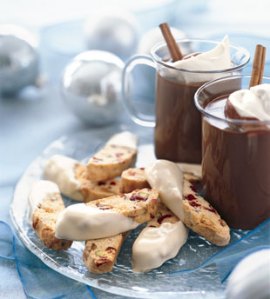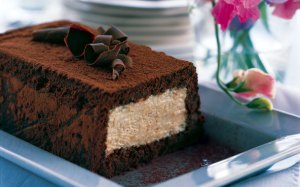An article by John Hornung, Incasa Instant Coffees.
Since I was extensively involved in issues concerning Coffee and Prop 65, I have had a lot of folks asking me lately, “So, what’s up with that?!” Here is my December, 2019 update.
On October 1, 2019, a regulation exempting Coffee from California’s Prop 65’s warning requirements went into effect. The regulation was approved by the California Office of Administrative Law after being proposed in June of 2018 and later adopted by OEHHA. (The Office of Environmental Health Hazard Assessment (OEHHA) is the lead agency that implements Prop 65 in the state of California.)
The regulation states: “Exposures to chemicals in coffee, listed on or before March 15, 2019 as known to the state to cause cancer, that are created by and inherent in the processes of roasting coffee beans or brewing coffee, do not pose a significant risk of cancer.”
So, how did this come about?
From Prop 65 In Plain Language:
“In 1986, California voters approved an initiative to address their growing concerns about exposure to toxic chemicals. That initiative became the Safe Drinking Water and Toxic Enforcement Act of 1986, better known by its original name of “Proposition 65” or “Prop 65”. Prop 65 requires the State to publish a list of chemicals known to cause cancer or birth defects, or other reproductive harm. This list, which must be updated at least once a year, has grown to include over 900 chemicals since it was first published in 1987. Prop 65 requires businesses to notify Californians about significant amounts of chemicals in the products they purchase, in their homes or workplaces, or that are released into the environment…”
An article from the Golden Gate University School of Law Digital Commons asserts that Prop 65 has proven its value as a successful public health initiative by reducing industrial air emissions of lead, ethylene oxide, perchloroethylene, and other contaminants. It has also caused manufacturers to make significant reformulations of consumer products containing toxic chemicals, not just in California, but nationwide…. For products in which reformulations are not feasible, such as fresh fish containing mercury, the law has led to consumer warnings.
(From: Golden Gate University School of Law Digital Commons: “The Continued Success of Proposition 65 in Reducing Toxic Exposures”)
However, Prop 65 remains highly controversial in large part because of the so-called “bounty hunter” industry — firms that have turned its enforcement into a predatory cottage industry. An article by the NCA in Roast Magazine claims, “by 2010, more than 16,000 notices had been served under Proposition 65. Most of those cases ended in settlements. Between 2006 and 2010 alone, businesses paid over $61 million in reported settlements with private plaintiffs — $42 million to attorneys’ fees and $33 million to just six plaintiffs’ lawyers.”
In late March 2018 Los Angeles Superior Court Judge Elihu Berle issued a ruling against the industry in a long-standing case involving Coffee and California’s Proposition 65. The “acrylamide in coffee case.”
A few months later, on June 13, 2018, the International Agency for Research on Cancer (IARC), which is the World Health Organization’s (WHO) cancer research arm, and a Proposition 65 authoritative body, published that, based on its review of more than 1000 studies in humans, animals, in vitro, and other experimental systems, there was inadequate evidence for the carcinogenicity of drinking coffee, and placed coffee in Group 3: “not classifiable as to its carcinogenicity to humans”.
At the same time, IARC concluded that drinking coffee is inversely associated with (prevents) cancers of the liver, uterine endometrium, colorectal cancers, and poses no increased risk, or an inverse association with breast cancer, and cancers of the pancreas and prostate. IARC also found strong evidence in humans that coffee has antioxidant effects that are related to reductions in cancer risk. Journalists around the world picked up on IARC’s findings and statements and contrasted them with what “those kooks in California” were up to!
OEHHA had been notified of IARC’s conclusions and in June of the same year they proposed the following:
“…to add a new section to title 27 of the California Code of Regulations stating that exposures to Prop 65 listed chemicals in coffee, that are produced as part of and inherent in the processes of roasting and brewing coffee, pose no significant risk of cancer. No cancer warning would be required for exposures to these chemicals if this proposed regulation is adopted.
The comment period on the proposal ran through August 30 of that same year and a hearing was held in Sacramento on August 16. I testified as a representative of the Pacific Coast Coffee Association (PCCA), but mostly as a California citizen. I will post my testimony as a follow-up article to this one.
Strong Support from the Statement Submitted by the FDA:
The FDA submitted their comment on August 29, 2018. The statement by FDA Commissioner Scott Gottlieb, M.D., included the following:
“…Ensuring that food is safe and truthfully labeled is one of our fundamental responsibilities at the U.S. Food and Drug Administration. Consumers deserve accurate information about the food they eat and how it can affect their health and nutrition. That’s why congress entrusted the FDA to serve as the nation’s expert on food safety and labeling and to craft predictable, uniform federal requirements on matters within our jurisdiction. Consistent with that authority, we work to provide the best advice possible to Americans about the foods they eat based on the most recent scientific information, taking into account the food’s benefits in addition to any potential health risks.
Part of our mission in this space means ensuring that food product labeling doesn’t contain false or misleading statements about safety or nutrition. This includes statements that food manufacturers make on their own initiative. But it also includes statements that may be compelled under state law.
Simply put, if a state law purports to require food labeling to include a false or misleading statement, the FDA may decide to step in.
That’s why we were deeply concerned when a court recently ruled that a California law – known as proposition 65 – may require coffee sold in California to be labeled with a cancer warning because of the presence of a chemical called acrylamide. …, but requiring a cancer warning on coffee, based on the presence of acrylamide, would be more likely to mislead consumers than to inform them….”
Lins to Transcripts from the hearing, peer review comments, and public comments can be found here on OEHHA’s website. (Links are at bottom of web-page.):
What happens next?
There have, of course, been numerous motions, appeals, requests for stays, etc. filed, and the subject is mired in discussions of who will be the judge to rule on the case, does it conflict with federal law, is it a first amendment issue, etc. It is quite clear that this will take years of appellate proceedings to resolve. In the meantime, coffee drinkers will not have to witness a misleading label warning them away from what science has shown over and over to be a very healthy beverage – one that is the most significant source of antioxidants in the American diet!
So, drink up, my friends!










